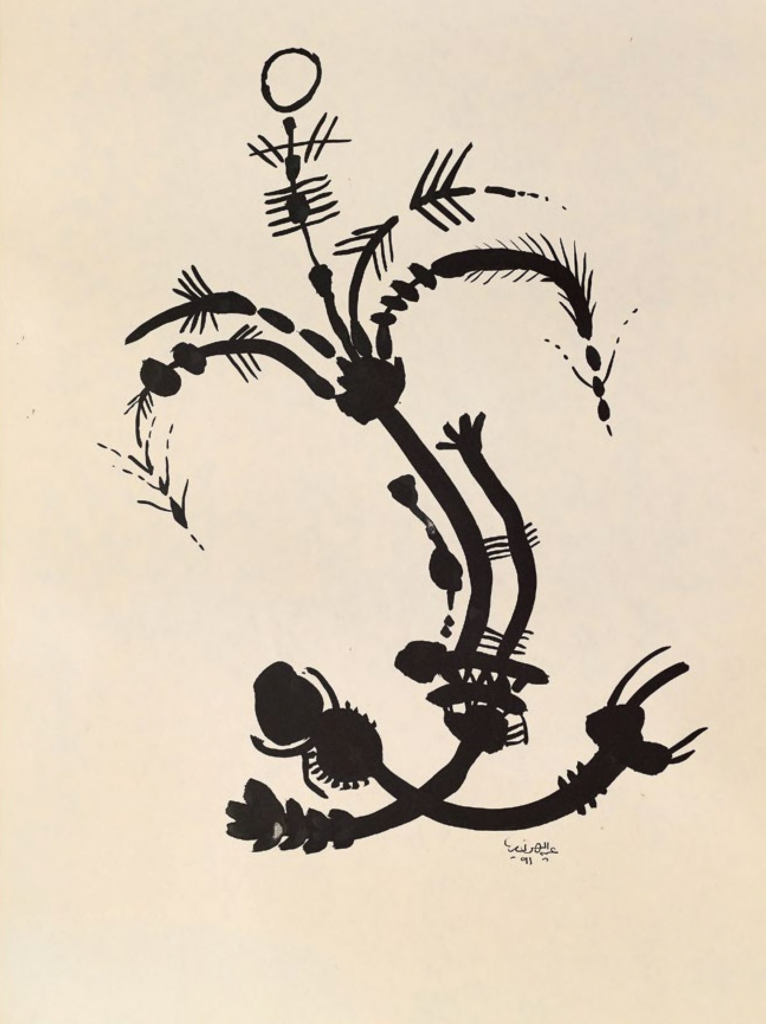ABDULRAHMAN AL-SOLIMAN
Born in 1954 in Al-Ahsa, Saudi Arabia, he lives and works in Dammam
Palm, Bow and Fragments
1990-91

Abdulrahman Al-Soliman belongs to a generation of pioneering Saudi artists who came of age in the 1960s and 1970s and defined the artistic transformations of this era. Like a number of his peers, he not only pursued his own work as a painter but also actively fostered the community of contemporary art. An avid writer, journalist, and researcher, he has been documenting Saudi art practices, in particular those of the Eastern Province, since 1983 as the Fine Arts Editor of the Al Yaum newspaper and as the author of books such as The Journey of the Saudi Fine Arts Movement (2000). In his own work, over the course of decades, he has distilled a masterful, expressive, yet highly personal visual vocabulary sprung from memories of landscapes and spaces.
The series of drawings Palm, Bow, and Fragments (1990–91) was started during the Gulf War of 1990 and is being shown here for the first time. Often traveling between his hometown Al Ahsa and the city of Dammam, where he currently resides, the artist bore witness to ramifications of the war unfolding in neighboring Kuwait. The haziness of the sky caused by the fires in Kuwait’s oil fields settled on Dammam; sparks from distant Patriot missiles lit up the deep darkness of night; and during rainfalls ash residue would run down the trunks of palm trees, coloring the ground. In response, Al-Soliman started creating gestural drawings using Chinese ink sourced from a local crafts store, the perfect medium to mark the time spent waiting for peace amid the chaos of war.
The intensity of the black ink varies slightly from one drawing to another, shifting from bold marks to lighter strokes. The palm tree is referenced throughout, as an important symbol of Al Ahsa, the world’s largest oasis and home to over 2.5 million palms. Used to construct the ceilings of traditional mud houses, palms suggest shelter. More importantly for the artist, the palm tree was a symbol of strength, freedom, and perseverance amid all the uncertainty, a standing figure unbothered by the winds of change. In his drawings, a palm tree becomes a bullet, the arches of the houses form an embrace, and dots of ink burst into fragments.
